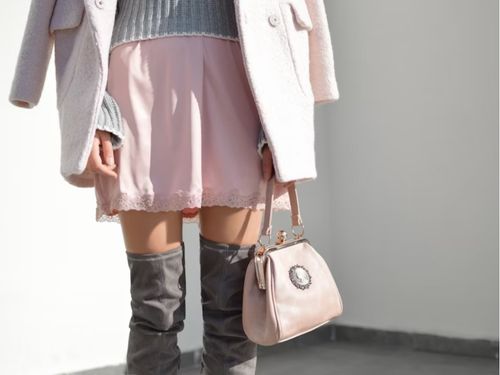Fashion has always been a reflection of culture, identity, and taste, but it’s increasingly becoming a mirror for sustainability. As shoppers rethink their consumption habits, two contrasting aesthetics—minimalism and maximalism—offer very different environmental footprints. While minimalism champions simplicity and restraint, maximalism celebrates abundance and expression. The question is: which approach is truly more eco-friendly?
Minimalism: Less Is More
Minimalism emphasizes quality over quantity, favoring timeless pieces that can be worn repeatedly. Think neutral-toned staples, versatile silhouettes, and durable fabrics that resist wear and tear. By investing in fewer items, minimalists reduce textile waste, lower water and energy usage, and minimize the carbon footprint associated with producing fast-fashion pieces. The philosophy aligns perfectly with sustainable practices such as slow fashion, capsule wardrobes, and mindful shopping, enabling consumers to make thoughtful purchases that last.
Minimalist wardrobes encourage repair and maintenance rather than disposal, often relying on multipurpose pieces that can transition seamlessly from work to leisure. From a sustainability standpoint, minimalism is straightforward: the fewer items produced, purchased, and discarded, the smaller the environmental impact.
Maximalism: Excess with a Twist
Maximalism, on the other hand, revels in bold colors, patterns, layers, and statement accessories. At first glance, it might seem at odds with sustainability, but it doesn’t have to be wasteful. Maximalist fashion can embrace secondhand shopping, vintage finds, rentals, and upcycling, turning creativity into a force for eco-conscious consumption. A once-boring denim jacket can be transformed into a wearable masterpiece with hand-painted designs, embroidered patches, or added embellishments, extending its life while making it a statement piece.
Maximalism thrives on creative layering and mixing and matching, which means a smaller collection of thoughtfully sourced pieces can yield a wide variety of looks. The approach rewards ingenuity over mass purchasing. Even for those who love bold trends, renting high-end pieces for special events reduces the need to purchase expensive items that may only be worn once. In this sense, maximalism, when practiced intentionally, can be both expressive and environmentally responsible.
Practical Tips for Eco-Conscious Fashion

Buy Quality, Not Quantity
Regardless of whether your style leans minimalist or maximalist, investing in well-made, durable pieces is key to building a sustainable wardrobe. High-quality fabrics, precise stitching, and timeless cuts not only elevate the look and feel of an item but also significantly extend its lifespan. A classic wool coat, a pair of leather boots, or a tailored blazer can withstand seasons of wear and evolving trends, reducing the need for constant replacements. By prioritizing craftsmanship over sheer volume, fashion enthusiasts can enjoy a wardrobe that feels luxurious, functional, and enduring, all while minimizing environmental impact. In essence, choosing quality over quantity is a simple yet powerful step toward a more conscious, stylish, and sustainable approach to fashion.
Upcycle and Personalize
Transforming old garments into statement pieces is a creative and sustainable way to breathe new life into your wardrobe. Through techniques such as embroidery, hand-painted designs, or the addition of patches and embellishments, you can transform ordinary clothing into truly one-of-a-kind items that reflect your personal style. This approach is particularly appealing for those with maximalist wardrobes, as it allows for bold, layered, and eclectic outfits without contributing to overconsumption.
Beyond aesthetics, upcycling fosters a deeper connection with your clothing—every stitch, stroke, or appliqué tells a story and makes the piece uniquely yours. By embracing personalization, fashion enthusiasts not only showcase their individuality but also extend the lifespan of garments, combining creativity, style, and sustainability in one empowering practice.
Embrace Rentals and Secondhand
In today’s fast-paced fashion landscape, rentals and secondhand shopping offer smart, sustainable alternatives to traditional buying. Renting allows you to experiment with the latest trends, bold statement pieces, or high-end designer items without contributing to overproduction or filling your closet with garments you’ll rarely wear. Meanwhile, thrifted or vintage shopping opens the door to unique, one-of-a-kind finds that carry character and history, all while keeping clothing out of landfills. Both approaches encourage mindful consumption: you get the thrill of fresh style and the joy of discovery without the environmental cost of fast fashion. By blending rentals with secondhand treasures, fashion lovers can enjoy versatility, creativity, and sustainability in equal measure.
Mindful Mixing
Mindful mixing is a strategy that allows both maximalists and minimalists to enjoy dynamic wardrobes without falling into the trap of overconsumption. For maximalists, it’s about creatively combining a smaller set of versatile pieces to achieve a sense of abundance—layering textures, patterns, and colors in unexpected ways so that each outfit feels fresh and intentional. Minimalists, on the other hand, can keep their streamlined wardrobes exciting by introducing pops of color, statement accessories, or patterned accents that elevate classic staples.
This approach encourages thoughtful styling, making each item work harder while reducing the need for constant new purchases. By embracing mindful mixing, fashion lovers of all styles can cultivate variety, creativity, and personality in their wardrobes—all while staying environmentally conscious and avoiding excess.
Repair Instead of Replace
- One of the simplest yet most impactful ways to practice sustainable fashion is to repair rather than replace your garments. Small actions—such as reinforcing worn seams, swapping out missing buttons, patching holes, or sewing tears—can dramatically extend the life of a favorite piece. Not only does this approach save money and reduce waste, but it also allows you to preserve items that carry personal or sentimental value, from a well-loved denim jacket to a cherished cardigan.
- Repairing clothing doesn’t have to be intimidating. For minor fixes, a basic sewing kit or fabric glue is often all that is needed, while local tailors or professional menders can handle more intricate repairs. Over time, these small interventions add up, significantly reducing the environmental toll of constantly buying new items. By choosing repair over replacement, fashion enthusiasts embrace a mindset of care, longevity, and intentionality—keeping garments in rotation longer, honoring the craftsmanship behind them, and contributing to a more sustainable fashion ecosystem.
Environmental Impact: A Closer Look

Minimalist Wardrobe
A carefully curated minimalist wardrobe—owning around 30 high-quality, versatile pieces instead of 100 fast-fashion items—can have a profound environmental impact. By prioritizing durable fabrics, timeless cuts, and well-made garments, minimalists can reduce carbon emissions from production by 40–50%, save hundreds of gallons of water, and prevent a significant amount of textile waste from ending up in landfills. Each thoughtfully chosen item works harder, offering multiple styling options while minimizing the ecological footprint of your wardrobe.
Maximalist Wardrobe
Sustainability can coexist with an expressive and abundant wardrobe. Incorporating pre-loved, upcycled, or rented pieces enables the creation of bold, layered, and creative outfits while delivering meaningful environmental benefits. Eco-consciousness and wardrobe variety are not mutually exclusive; abundance can align with responsibility. Careful sourcing and mindful styling support both creativity and cultural trends, while contributing to a circular fashion economy. This approach emphasizes that sustainability depends as much on the use of clothing as on its ownership.
Striking a Balance
Eco-conscious fashion isn’t about rigidly choosing minimalism over maximalism—or vice versa—it’s about intentionality and mindful decision-making. For minimalists, adding small bursts of creativity through DIY embellishments, statement accessories, or seasonal accents allows wardrobes to remain fresh and visually engaging without overconsumption. Maximalists, on the other hand, can embrace their love for bold, eclectic outfits while prioritizing sustainability by focusing on thrifted finds, upcycled pieces, or rented garments.
The key in both cases is thoughtful curation: understanding the environmental impact of each purchase, investing in quality items that last, and making sure every piece is utilized to its fullest potential. By striking this balance, fashion enthusiasts of all styles can enjoy variety, self-expression, and trend experimentation without contributing to waste. When executed with care, both minimalism and maximalism can support a circular fashion economy—proving that style, creativity, and sustainability are not mutually exclusive, but can coexist beautifully.
Finding the Middle Ground
Eco-conscious fashion doesn’t demand a strict choice between minimalism and maximalism—both can coexist sustainably when approached thoughtfully. Minimalists, for instance, can introduce small bursts of creativity through DIY accents, unique patches, or statement accessories, keeping their wardrobe fresh without overconsumption. Meanwhile, maximalists can channel their love of bold, layered, or eclectic outfits by focusing on reused, rented, or upcycled pieces, ensuring that their expressive style doesn’t come at the planet’s expense.
At the heart of sustainable fashion lies intentionality. It’s about understanding the environmental impact of every purchase, prioritizing quality over quantity, and making sure each garment or accessory is used to its fullest potential. Whether curating a capsule wardrobe or assembling a vibrant, statement-filled collection, thoughtful choices can make any fashion approach both stylish and eco-friendly. The ultimate goal isn’t to conform to a single aesthetic, but to enjoy fashion creatively while minimizing waste, maximizing longevity, and honoring sustainability as a guiding principle.
Blending Style with Sustainability
Neither minimalism nor maximalism is inherently more sustainable—each brings its own set of advantages. Minimalism helps reduce overconsumption, simplifies wardrobes, and encourages investment in high-quality, durable staples that last for years. Maximalism, meanwhile, fosters creativity and self-expression, often incorporating pre-loved, upcycled, or rented pieces that give garments new life while reducing waste. Both approaches can support eco-conscious fashion when practiced thoughtfully.
For the modern, environmentally aware consumer, the most effective strategy may be a hybrid approach: building a foundation of timeless, well-made essentials and complementing them with expressive, responsibly sourced statement pieces. This balance allows wardrobes to remain versatile, personal, and stylish while minimizing environmental impact. By blending the best of both aesthetics, fashion can be both a platform for individuality and a tool for sustainability, proving that style and responsibility can coexist seamlessly.


